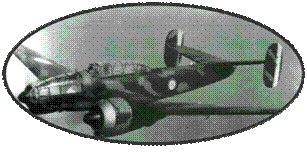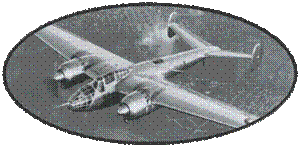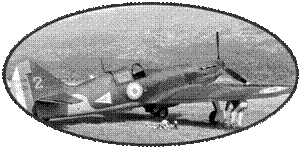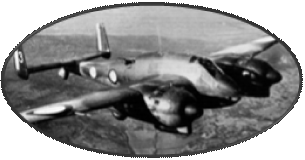The Boulton Paul-Defiant
meets a specification issued by the British Air Staff in 1935. The
program was intended to provide the Royal Air Force with a aircraft
capable of attacking enemy bombers from underneath, a party deemed
the most vulnerable. For this the aircraft had to be equipped with
a quadruple dorsal turret, similar to that which fitted the British
bombers.
The new plane was drawn around this bulky turret. This one, designed
in France, is built in England under license by the Boulton company.
The turret, powered by an independent hydraulic-pneumatic system,
can turn 360 °. The gunner is protected by mobile aerodynamic
deflectors actuated by jacks. The armament therefore consists of four
7.7mm Browning machine guns with 600 cartridges each. The firepower,
concentrated, is consistent despite the small caliber retained. On
the other hand, no armament is provided at the front of the plane.
The radio antenna, retractable on landing, takes place in ventral
position to clear the shooting range of the turret.
The Paul-Defiant's design is modern and reminiscent of the contemporary
hurricane. It is an all-metal aircraft with low wings and retractable
landing gear, powered by the excellent 1030hp Merlin III engine. However
the surface and mass of the turret (200 kg) will degrade the performance:
in the end, the aircraft will be 800kg heavier than the hurricane
iso motorization ...
The studies were launched in 1935, and the prototype P-82 made its
first flight in August 1937, without a turret. His performances are
considered good. Studies, however, are delayed, and the second prototype,
equipped with the rear turret, will fly in May 1939, followed in July
1939 the first aircraft series. With the installation of the turret,
the performance fell sharply, but the mass production is launched,
without changes can be made to try to compensate for this handicap.
The Squadron 264 and the Squadron 141, perceive the new aircraft from
December 1939. The Paul-Defiant will know the baptism of fire at Dunkirk
May 29, 1940, in Squadron 264. The beginnings are victorious against
the German fighters, Believing to attack hurricanes from behind and
suddenly being under fire from the four machine-guns of the rear turret.
This period of grace is short-lived ... German fighters will quickly
exploit the main weakness of Paul-defiant: the lack of armament pulling
forward, and frontal attacks will be lethal with dramatic loss rates.
Thus on July 18,
1940, during the Battle of England, 9 Paul-Defiant Squadron 141 are
attacked by ME109. 5 aircraft will be quickly shot down resulting
in death 4 pilots and 5 gunners ... The story will be repeated with
the Squadron 264: this unit used as reinforcement to compensate the
losses of fighters single-seaters, will lose in a week almost all
of its workforce: 11 aircraft will be lost, as well as 5 pilots and
9 machine-gunners. On August 28, 1940, the unit ceased to exist ...
Note the significant mortality rate of machine gunners: it was indeed
extremely difficult to extricate flight of the turret back to jump
parachute.
Following this disastrous record, the Paul-Defiant is assigned to
the night fighter under the designation of Defiant NF Mk 1A, with
mixed success. The installation on board the heavy Radar, essential
equipment for these missions, will weigh down the aircraft to the
detriment of already modest performances. From May 1942, the defiant
Paul is retired from active service and ends his career by performing
missions of towing targets or rescue at sea. It will be a time used
as a "jamming plane", intended to deceive the German radars
and diverting German fighters from the Allies bombers' road.
In the end, around
1064 Defiant will be manufactured, divided into:
- 723 Mk I,
- 212 Mk II:
version equipped with engine Merlin XX of 1260ch
- MK IA version
for the rest, equipped with the Radar for night hunting
Plan
3 views













